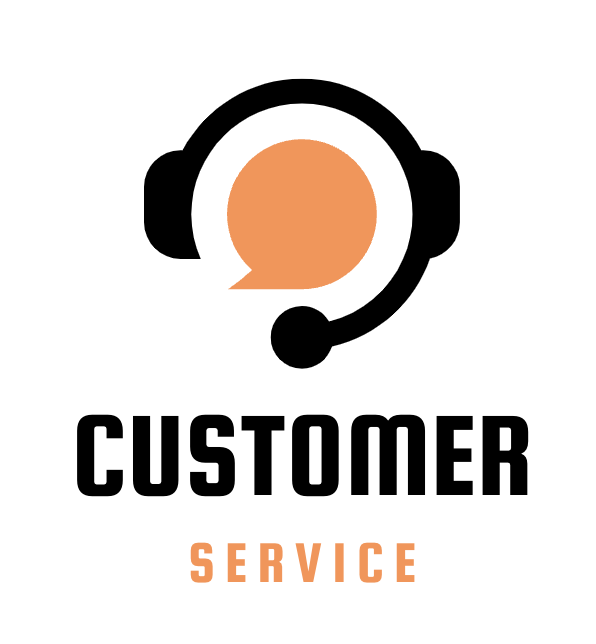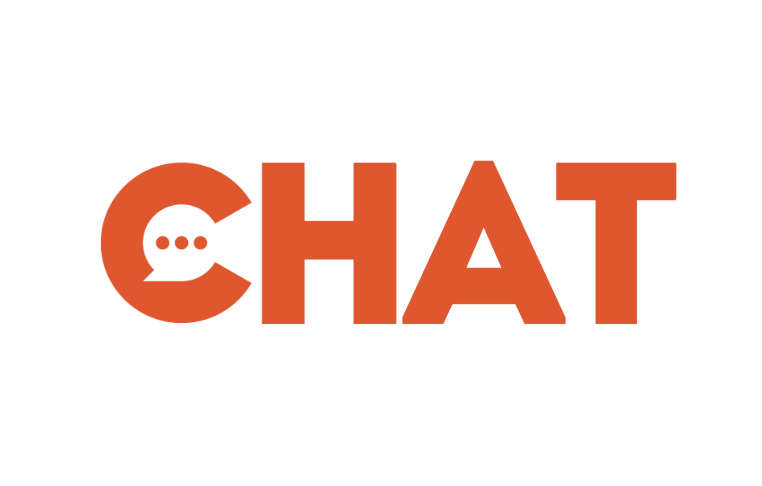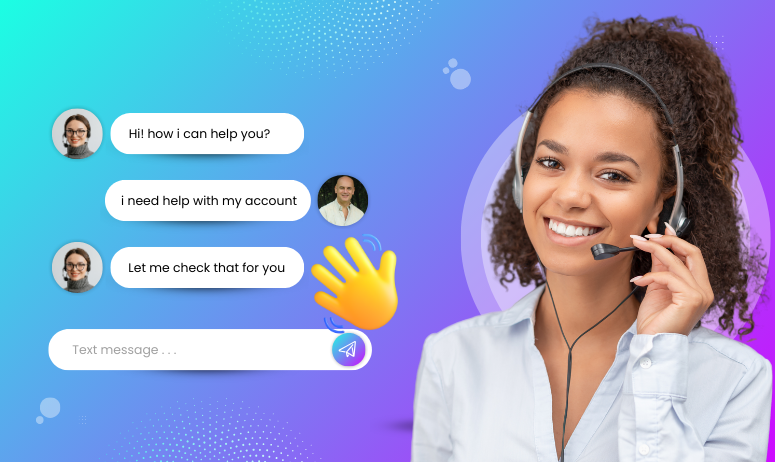The best way to predict the future is to create it.
Peter Drucker
In today's fast-paced digital landscape, live chat popups have become essential tools for online businesses looking to enhance user engagement and support. These popups allow businesses to initiate real-time conversations with visitors, addressing their needs and questions as they arise. By seamlessly integrating chat capabilities into your website, you can provide instant assistance, thereby improving customer satisfaction and boosting conversion rates.
Understanding Live Chat Popups 💬
Live chat popups are interactive messaging tools that appear on a website, allowing users to communicate directly with support agents or automated chatbots. Their primary purpose is to facilitate immediate customer service and support, ensuring that users receive the help they need without delays.
The Importance of Real-Time Communication ⏰
Real-time communication is pivotal in today’s digital marketplace. Customers increasingly expect immediate responses to their inquiries. Live chat popups not only meet this expectation but can significantly enhance user experience by providing:
Improved Customer Support: Instant access to assistance reduces frustration and builds trust.
Increased Conversion Rates: By engaging users at critical moments, businesses can guide them toward making purchases or completing forms.
The Fundamentals of Live Chat Popups 🔑

What Makes a Good Live Chat Popup? 🎯
A good live chat popup is more than just a tool for communication; it’s an integral part of the user experience. Here are the key characteristics that elevate a live chat popup from ordinary to exceptional:
User-Friendly Interface: A simple and intuitive design ensures users can easily initiate conversations without frustration.
Timely Engagement: Proactively reaching out to users when they show signs of hesitation can make a significant difference in engagement levels.
Personalization: Tailoring messages to specific user behaviors or demographics creates a more relevant and compelling experience.
Benefits of Using Live Chat Popups 🚀
Incorporating live chat popups into your website offers numerous advantages that can propel your business forward:
Improved Customer Support: Users appreciate immediate assistance, and live chat ensures that help is just a click away.
Increased Conversions: Engaging users during critical decision-making moments can lead to higher conversion rates, turning hesitant visitors into loyal customers.
Enhanced User Engagement: Live chat creates a more interactive and dynamic browsing experience, encouraging users to spend more time on your site.
Types of Live Chat Popups 📑
Proactive Chat Popups 🤖
Proactive chat popups are designed to engage users before they even ask for help. These popups can appear based on specific user behaviors, such as:
Time on Page: If a user spends an extended period on a page, a proactive chat popup can offer assistance, suggesting they may have questions or need help navigating.
Scroll Depth: When users scroll down a certain percentage of the page, it indicates their interest. This is the perfect time to trigger a chat invitation.
Exit Intent: When a user is about to leave the site, proactive popups can appear to offer help or special offers, capturing potential lost leads.
Reactive Chat Popups 💡
Reactive chat popups respond directly to user actions. They typically activate when:
User Clicks on Help: If a user clicks on a help button or FAQ link, a chat popup can instantly appear to provide live support.
User Types a Query in a Search Bar: Upon entering a search term, users can be offered immediate chat support for their specific inquiries.
Custom Chat Popups 🎨
Custom chat popups allow businesses to tailor the chat experience based on specific user segments or campaigns. This customization can include:
Targeted Messaging: Tailoring messages based on the user’s location, behavior, or previous interactions creates a more relevant experience.
Branding Elements: Incorporating unique branding elements such as colors, fonts, and logos makes the chat experience feel more integrated and authentic.
Designing Effective Live Chat Popups ✍️

Crafting Clear and Engaging Copy 📝
When it comes to live chat popups, the words you choose can make or break the user experience. Here are some essential tips for crafting copy that captures attention and encourages interaction:
Be Concise: Aim for clear, straightforward language that gets to the point quickly. Avoid jargon or complex terms that might confuse users. For example, instead of saying, “How may I assist you today?”, try “Need help? Chat with us!” This keeps the tone friendly and approachable.
Use a Friendly Tone: A conversational style helps build rapport with users. Phrases like “Hey there! How can I help you today?” invite users to engage without feeling pressured.
Incorporate Value Propositions: Highlight what users can gain from the chat. For instance, “Got a question? Get instant answers and support!” informs them that they’ll receive quick help, increasing the likelihood they’ll start a conversation.
Visual Design Best Practices 🎨
An eye-catching design can draw users in. Here are some visual elements to consider:
Color Scheme: Use colors that align with your brand but also stand out. Ensure there’s enough contrast between the text and background for readability.
Size and Placement: The popup shouldn’t overwhelm the user. A medium-sized popup positioned in a corner or at the center-bottom of the screen can effectively catch attention without obstructing content.
Images and Icons: Including friendly icons or images can humanize the chat experience. A small avatar or illustration of a customer service representative can make the interaction feel more personal.
Placement and Timing ⏱️
Knowing when and where to display chat popups is crucial for engagement:
Timing: Avoid triggering popups too soon after page load, as this can irritate users. Instead, wait for a few seconds or until they show intent to exit.
Placement: Position the popup in a non-intrusive area of the screen. Consider using bottom-right or bottom-left corners for proactive popups, allowing users to maintain focus on the content.
Integrating WhatsApp for Live Communication with Poper 📱
Setting Up WhatsApp Integration 🔗
Integrating WhatsApp into your communication strategy is a smart way to provide real-time support and leverage the familiarity users have with the app. Here’s a quick guide on how to set up WhatsApp in Poper:
Create a WhatsApp Business Account: If you don’t have one yet, download the WhatsApp Business app and follow the setup instructions. This account allows you to provide business information and communicate professionally.
Get Your WhatsApp Link: Use the following format to create a clickable link for your WhatsApp chat:
https://wa.me/Replace <YourPhoneNumber> with your full phone number in international format (without any symbols or spaces). This link enables users to initiate a chat directly.
Integrate with Poper: In your Poper dashboard, navigate to the popup settings where you want to add the WhatsApp option. Add a button or link with the WhatsApp URL you created. This makes it easy for users to contact you instantly.
Designing WhatsApp Popup Messages 💬
Your WhatsApp popup messages should be engaging and encourage users to reach out. Here are some tips for crafting compelling messages:
Clear Call to Action: Make it easy for users to understand what they can do. Phrases like “Chat with us on WhatsApp for instant support!” create a sense of urgency and clarity.
Personalize the Message: Consider addressing users by their first name if you have that information available. A message such as “Hi [Name]! Need assistance? Let’s chat on WhatsApp!” feels more personal and welcoming.
Use Emojis to Enhance Engagement: Incorporating emojis can make your messages more inviting. For example, “Need help? 💬 Click here to chat with us on WhatsApp! 📱” adds a friendly touch that resonates with users.
Using Custom Widgets for Query Management 🛠️
Creating Custom Query Widgets in Poper 🛠️
Custom widgets in Poper allow you to streamline user inquiries and feedback, ensuring that you capture valuable information effectively. Here’s how to create and implement custom query widgets:
Access the Widget Builder: In your Poper dashboard, navigate to the Widgets section. Click on Create New Widget to start designing your custom form.
Choose the Right Format: Decide on the type of widget you need. Poper offers various formats, such as contact forms, feedback forms, or chat widgets. Choose one that aligns with your objectives.
Add Relevant Fields: Include fields that will help you gather the necessary information. Typical fields include:
Name: To personalize follow-ups.
Email Address: For future correspondence.
Query/Message: A text box where users can type their questions or feedback.
Use Conditional Logic: If Poper allows it, implement conditional logic to display specific questions based on previous answers. This ensures that users only see relevant questions, enhancing their experience.
Design for Clarity and Simplicity: Ensure that the design is clean and user-friendly. Use clear labels and maintain a consistent color scheme that aligns with your brand.
Implement a Thank You Message: After a user submits their query, show a friendly thank you message, such as “Thank you for reaching out! We’ll get back to you shortly.” This reassures users that their message has been received.
Best Practices for Form Design 📋
To maximize the effectiveness of your custom query widgets, consider these best practices:
Keep It Short: Limit the number of fields to reduce friction. A shorter form generally leads to higher completion rates.
Ensure Mobile-Friendliness: With many users accessing sites on mobile devices, test your widget on various screen sizes. Make sure the form is responsive and easy to fill out on smartphones and tablets.
Test and Iterate: After launching your widget, monitor its performance. Gather feedback from users on its usability and make adjustments as needed to improve engagement.
Monitoring and Responding to User Queries 📊
Best Practices for Follow-Up 🔄
Once you have established a connection through your custom widgets or chat popups, it's essential to maintain the momentum by engaging with your users effectively. Here are some best practices for following up on user queries:
Respond Promptly: Aim to respond to queries as quickly as possible. A prompt response not only shows users that you value their time but also enhances their overall experience. Ideally, aim for responses within 24 hours.
Personalize Your Messages: Whenever possible, personalize your follow-up emails or messages. Use the user’s name and reference their query to create a more engaging interaction. For instance, “Hi [User's Name], thank you for your question about [specific query]. Here’s the information you requested…”
Provide Solutions or Resources: When responding to queries, ensure that you offer clear solutions or helpful resources. If a user inquired about a product, link them to relevant articles or product pages that can assist them further.
Encourage Further Interaction: Conclude your message with an invitation for additional questions or discussions. Phrases like “Feel free to reach out if you have any more questions!” can foster a continuous line of communication.
Leveraging User Feedback for Improvement 📈
User feedback is an invaluable resource for improving your services and enhancing user engagement. Here’s how to leverage this feedback effectively:
Collect Data Regularly: Utilize your custom widgets to gather feedback consistently. Include questions about user satisfaction and areas for improvement.
Analyze Trends: Regularly review the feedback you receive to identify patterns or recurring issues. This can help you prioritize areas that need attention and improvement.
Implement Changes: Based on user feedback, make necessary adjustments to your services or website. Whether it’s refining your chat popup messages or enhancing your product offerings, showing users that their input matters can significantly boost satisfaction.
Communicate Changes: When you implement changes based on user feedback, let your users know! A simple email or update can make them feel heard and valued, reinforcing their connection to your brand.
Common Mistakes to Avoid in Live Chat Popups ❌
Overloading with Information ⚠️
One of the biggest pitfalls in designing live chat popups is overwhelming users with too much information. Users typically have limited attention spans, especially when browsing online. Here’s why less is more:
Clarity Matters: Keep your messages clear and concise. Focus on the essential information that prompts users to take action or engage in a conversation.
Visual Clutter: Avoid cluttering the chat popup with excessive text, images, or buttons. A clean and simple design not only looks more appealing but also makes it easier for users to understand the purpose of the popup.
Key Takeaway: Prioritize clarity and brevity in your messaging to keep users engaged without overwhelming them.
Neglecting User Intent 🚫
Another common mistake is failing to consider the user's intent when designing chat popups. Understanding what users are looking for is crucial for effective communication. Here’s how to align your chat popups with user intent:
Timing is Everything: Triggering popups at the right moment can significantly affect user engagement. For instance, showing a chat popup when users are lingering on a product page can be more effective than a popup that appears immediately upon entry.
Tailored Messages: Customize your chat messages based on user behavior and preferences. If a user frequently visits the pricing page, your chat popup could offer assistance related to pricing questions or discounts.
Key Takeaway: Always consider the user's journey and intent when designing your chat popups to provide a relevant and helpful experience.

Future Trends in Live Chat Popups 🔮
Emerging Technologies in Customer Communication 🌐
As technology evolves, so does the landscape of customer communication. Here are some exciting trends shaping the future of live chat popups:
Integration of AI: Artificial Intelligence is increasingly being used to enhance live chat experiences. AI-driven chatbots can provide instant responses to common queries, allowing human agents to focus on more complex issues. This leads to faster response times and improved customer satisfaction.
Omnichannel Support: Users expect a seamless experience across various platforms. The future of live chat popups lies in integrating with multiple channels like email, social media, and messaging apps. This allows customers to engage with businesses on their preferred platforms while maintaining consistent communication.
Personalized Experiences: With advancements in data analytics, businesses can create highly personalized chat experiences. By leveraging user data, companies can tailor messages based on previous interactions, browsing behavior, and preferences, leading to more relevant conversations.
The Role of AI and Automation 🤖
AI and automation are revolutionizing how businesses interact with customers. Here's how these technologies are making an impact:
Automated Responses: AI can help craft responses for frequently asked questions, reducing the need for human intervention in straightforward inquiries. This ensures that customers receive immediate assistance, enhancing their experience.
Predictive Analysis: By analyzing user data, AI can predict user behavior and needs. This capability allows businesses to proactively reach out to users with relevant chat popups, significantly improving engagement rates.
Chatbot Integration: Businesses can integrate chatbots into their live chat popups for enhanced functionality. These chatbots can handle basic inquiries, provide information, and even facilitate transactions, ensuring users receive timely support.
FAQs ❓
What are the advantages of using WhatsApp for live chat?
WhatsApp offers instant communication, familiarity for users, and the ability to share multimedia, enhancing customer interactions.
How do I create a custom widget in Poper?
In Poper, you can create a custom widget by navigating to the widget settings and choosing the desired features to capture user inquiries effectively.
What should I include in my live chat popup message?
Ensure your message is clear, concise, and encourages engagement. Use a friendly tone and include a call to action.
How often should I analyze the performance of my chat popups?
Regular analysis, such as monthly reviews, helps you stay updated on effectiveness and adjust strategies as needed.
What are the key features to look for in live chat software?
Look for user-friendly interfaces, integration capabilities with other platforms, robust analytics, and customizable options for a tailored experience.
Final Thoughts
As we look toward the future, live chat popups will continue to evolve. Embracing new technologies and strategies will be crucial for businesses aiming to stay competitive. By integrating features like WhatsApp communication and custom query management widgets in platforms like Poper, companies can elevate their customer support while ensuring effective user engagement.
In the dynamic world of online business, mastering live chat popups can be a game changer—enabling brands to build trust, drive conversions, and create lasting relationships with their customers.




